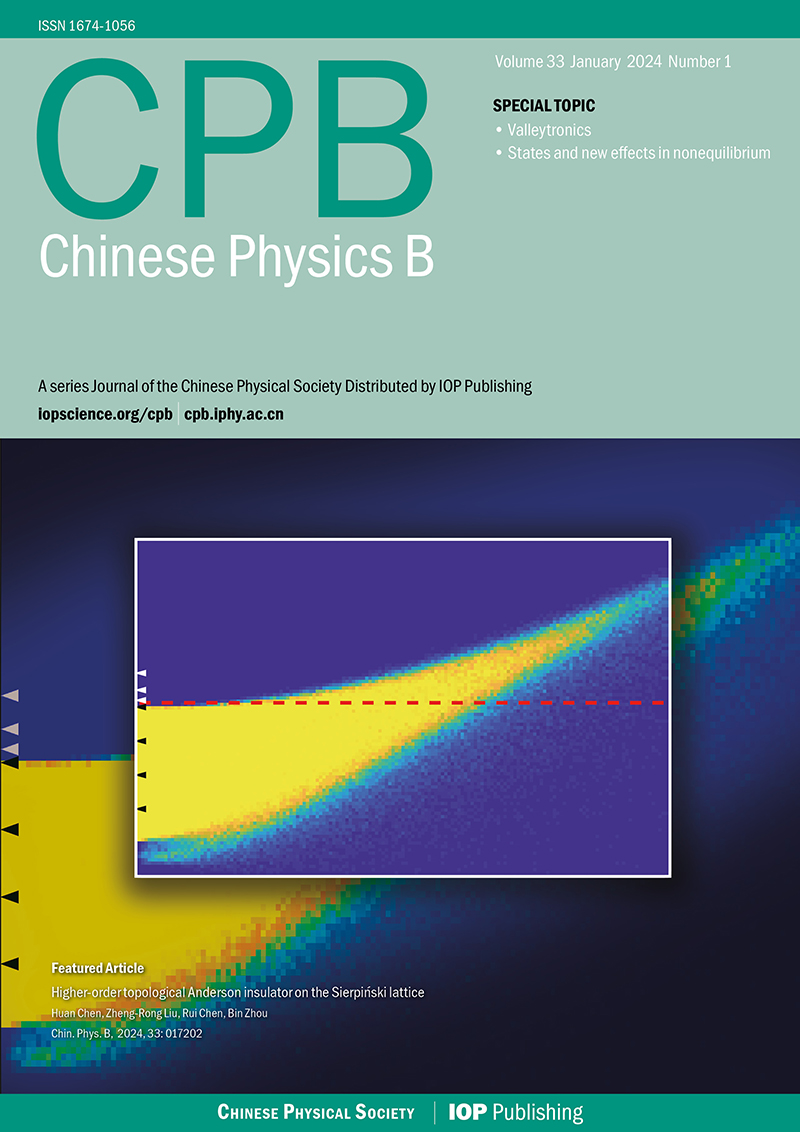Stacking stability of MoS2 bilayer: An ab initio study
IF 1.5
4区 物理与天体物理
Q2 PHYSICS, MULTIDISCIPLINARY
引用次数: 0
Abstract
The study of the stacking stability of bilayer MoS2 is essential since a bilayer has exhibited advantages over single layer MoS2 in many aspects for nanoelectronic applications. We explored the relative stability, optimal sliding path between different stacking orders of bilayer MoS2, and (especially) the effect of inter-layer stress, by combining first-principles density functional total energy calculations and the climbing-image nudge-elastic-band (CI-NEB) method. Among five typical stacking orders, which can be categorized into two kinds (I: AA, AB and II: AA′, AB′, A′B), we found that stacking orders with Mo and S superposing from both layers, such as AA′ and AB, is more stable than the others. With smaller computational efforts than potential energy profile searching, we can study the effect of inter-layer stress on the stacking stability. Under isobaric condition, the sliding barrier increases by a few eV/(ucGPa) from AA′ to AB′, compared to 0.1 eV/(ucGPa) from AB to [AB]. Moreover, we found that interlayer compressive stress can help enhance the transport properties of AA′. This study can help understand why inter-layer stress by dielectric gating materials can be an effective means to improving MoS2 on nanoelectronic applications.二硫化钼双分子层的堆积稳定性:从头算研究
在纳米电子应用中,双层二硫化钼在许多方面都表现出优于单层二硫化钼的优点,因此研究双层二硫化钼的堆砌稳定性至关重要。结合第一性原理密度泛函数总能量计算和爬升图像轻推弹性带(CI-NEB)方法,探讨了MoS2双层结构的相对稳定性、不同堆叠顺序之间的最优滑动路径,特别是层间应力的影响。在5种典型的堆叠顺序中(I: AA, AB和II: AA ', AB ', A ' b),我们发现两层Mo和S叠加的堆叠顺序,如AA '和AB,比其他堆叠顺序更稳定。与寻找势能剖面相比,计算量更小,可以研究层间应力对堆垛稳定性的影响。在等压条件下,从AA '到AB ',滑动势垒增加了几个eV/(ucGPa),而从AB到[AB],滑动势垒增加了0.1 eV/(ucGPa)。此外,我们发现层间压应力有助于提高AA '的输运性能。该研究有助于理解为什么介质门控材料的层间应力可以成为改善二硫化钼纳米电子应用的有效手段。
本文章由计算机程序翻译,如有差异,请以英文原文为准。
求助全文
约1分钟内获得全文
求助全文
来源期刊

Chinese Physics B
物理-物理:综合
CiteScore
2.80
自引率
23.50%
发文量
15667
审稿时长
2.4 months
期刊介绍:
Chinese Physics B is an international journal covering the latest developments and achievements in all branches of physics worldwide (with the exception of nuclear physics and physics of elementary particles and fields, which is covered by Chinese Physics C). It publishes original research papers and rapid communications reflecting creative and innovative achievements across the field of physics, as well as review articles covering important accomplishments in the frontiers of physics.
Subject coverage includes:
Condensed matter physics and the physics of materials
Atomic, molecular and optical physics
Statistical, nonlinear and soft matter physics
Plasma physics
Interdisciplinary physics.
 求助内容:
求助内容: 应助结果提醒方式:
应助结果提醒方式:


